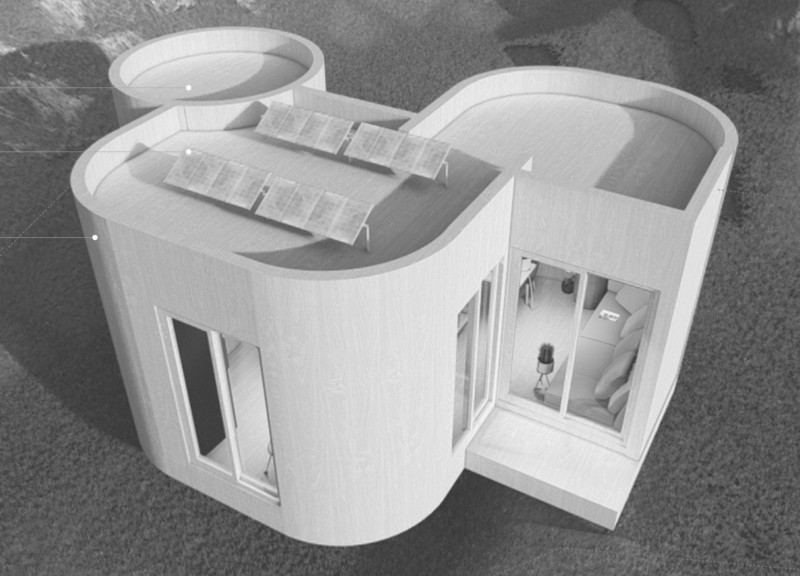5 key facts about this project
The microhome presents a thoughtful response to the growing need for efficient living spaces in urban environments. With limited square footage, the design aims to combine various functions into a compact, yet comfortable dwelling. It reflects a minimalist approach that prioritizes sustainability while also catering to the diverse needs of modern users.
Design Concept
Three main units define the layout: a living area with a kitchenette, a bedroom or workstation, and a bathroom, all complemented by a terrace. This organization promotes multifunctional use of space, allowing residents to navigate their daily activities with ease. Each section is designed to maximize utility, ensuring that the home remains both practical and inviting.
Sustainable Features
Natural ventilation and ample daylight are fundamental to the overall design. The careful positioning of windows and doors facilitates airflow and enhances light levels, contributing to a more pleasing indoor atmosphere. The southern orientation of the living areas optimizes exposure to sunlight, which can help reduce energy needs. Additionally, the inclusion of an optional glass-enclosed garden provides an opportunity for indoor greenery, connecting residents with nature despite the urban setting.
Material Choices
The structure relies on prefabricated cross-laminated timber panels. These panels are noted for their eco-friendly characteristics. The primary wall panels measure 155 cm by 300 cm, while curved panels extend to 180 cm in length. This approach not only streamlines the construction process but also minimizes waste, aligning with sustainability goals. The choice of timber adds warmth to the interior space, promoting a cozy environment for residents.
Functional Adaptability
The design allows for flexibility in arrangements, catering to varying user preferences over time. Residents can rearrange panels or modify layouts during construction and renovations. The roof is also designed to support rainwater collection and greening strategies, contributing to environmental sustainability. The integration of these features reflects a growing awareness of the importance of ecological considerations in residential design.
The microhome showcases a commitment to efficient living. Careful attention is paid to elements such as round corners and well-planned zoning, resulting in a cohesive and functional space. Each detail underscores the aim of creating a home that meets the practical needs of its occupants while being mindful of environmental impacts.



















































